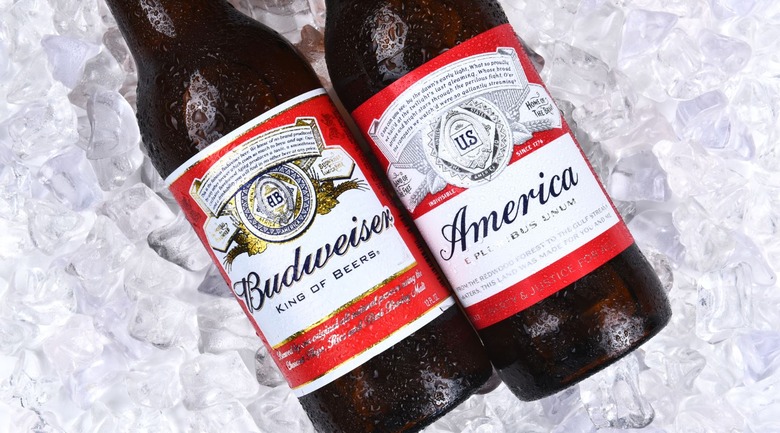What Does Budweiser's 'Beechwood Aging' Actually Accomplish?
Read the label on a bottle or can of Budweiser and you'll come across a curious sentence: "Our exclusive Beechwood Aging produces a taste, a smoothness, and a drinkability you will find in no other beer at any price." Um... seriously? What exactly is this "beechwood aging"? And if it produces such a high-quality beer (according to Budweiser), why aren't other breweries doing it? Or are they?
Let's start at the beginning. Beechwood is actually pretty common — it's the wood that Popsicle sticks are made from — and the beechwood used in the production of Budweiser is all a specific age, size, and quality. The trees (which are all American-grown) are cut into spiral chips exactly 18 inches long, and are cooked so that they're completely flavorless and sterile. They're then arranged on the bottom of lagering tanks (where the beer ages).
During the lagering process, yeast naturally falls to the bottom of the tank. The beechwood spirals give the yeast something to latch onto, and this promotes better fermentation by allowing more yeast to be in contact with the beer during the process. It also helps the yeast remove undesirable compounds from the finished beer (a lesser-known yeast function) more quickly, speeding up the aging process.
You've probably realized by now that beechwood aging doesn't actually impart any flavor to the beer, and the technique is actually a holdover from the nineteenth-century, when it was much more common and the science behind the brewing process was still being settled. The majority of brewers don't use beechwood chips these days because it's simply not necessary; the beer will turn out fine whether they're used or not, but it might just take a little longer to ferment.
